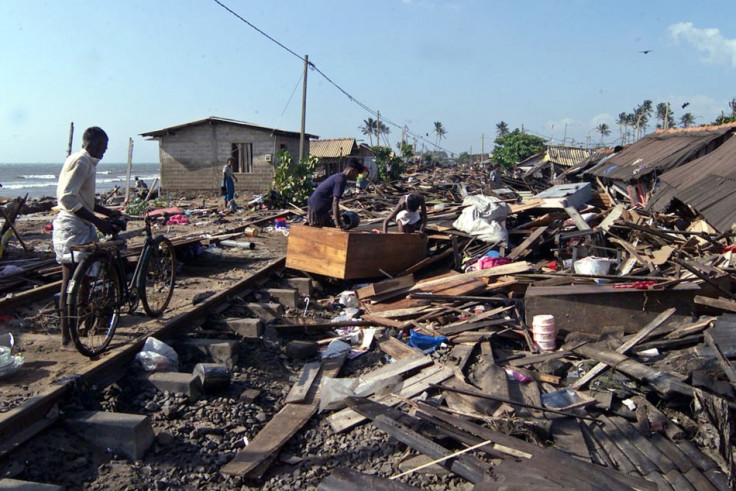Scientists Draw Map Predicting Where Giant Earthquakes Will Hit

Scientists have created a global map that predicts where giant earthquakes will hit.
The last giant earthquake took place in Japan in 2011. The Tohoku earthquake caused a huge tsunami and resulted in almost 16,000 deaths.
Before this, a giant earthquake in Chile in February 2010 killed 525 people, while a giant earthquake and tsunami in Sumatra in December 2004 killed over 200,000.
An international team of researchers led by Wouter Schellart from Monash University in Australia have developed a new global map focusing on subduction zones and illustration which ones are capable of generating giant earthquakes.
Subduction zones are where plate boundaries meet and when one plate sinks beneath the other, going into Earth's interior.
The largest earthquakes on Earth only take place at subduction zones. Researchers looked at seismological records dating back to 1900 to look at when and where giant earthquakes took place.
Schellart said: "The main question is, are all subduction segments capable of generating giant earthquakes, or only some of them? And if only a limited number of them, then how can we identify these."

The researchers used the seismological data and data from subduction zones to map the primary characteristics of all active subduction zones on Earth.
They then looked at the zones that have experienced giant earthquakes to establish shared features in their geological, geometrical and physical properties.
Findings showed the main indicators of a giant earthquake was how the plate overlies the subduction zone, the stress placed on the zone, the dip angle, the curvature of the plate boundary and how fast it moves.
Areas at risk of experiencing giant earthquakes include the Lesser Antilles which affects islands in the Caribbean, Mexico, the Makran, which runs along the coast of Pakistan and Iran, North Sulawesi in Indonesia, Sunda in Southeast Asia and Hikurangi in New Zealand.
Schellart said: "For the Australian region subduction zones of particular significance are the Sunda subduction zone, running from the Andaman Islands along Sumatra and Java to Sumba, and the Hikurangi subduction segment offshore the east coast of the North Island of New Zealand. Our research predicts that these zones are capable of producing giant earthquakes.
"Our work also predicts that several other subduction segments that surround eastern Australia (New Britain, San Cristobal, New Hebrides, Tonga, Puysegur), are not capable of producing giant earthquakes."
Read more:
Japan 2011 Tsunami Could Happen Again
© Copyright IBTimes 2025. All rights reserved.





















